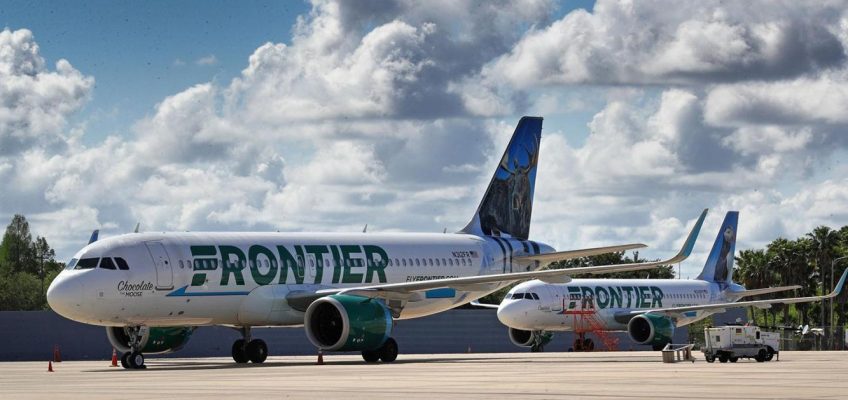Beans are high in protein, fiber, vitamins, and minerals. Important attributes, but there is more to say about their surge in popularity. Beans, especially those contained in cans, are easy to use. Plus, with just a little bit of effort they can be delicious. Throw frugality into the mix, and you have a winning ingredient.
The whoosh-whirl sound of lid parting can announce that dinner is just minutes away. It’s a welcome tune to a frazzled cook’s ears.
Purists might argue that cooked-from-scratch beans are better, insisting that canned beans are saltier and more expensive. True, but dried beans can take an hour or more to cook, eliminating them as a candidate for quick-to-prepare meals. Folks with concerns about salt can plop the beans from the can into a colander. Once rinsed with cold water, they shimmer like tiny pebbles in a shallow stream. As a rule, don’t add much salt to the dish until it is completed; add salt to taste to the finished dish if needed.
Potato and Bacon Hash with Cheesy Beans can be a breakfast-for-dinner treat. (Photo by Cathy Thomas)
Potato and Bacon Hash with Cheesy Beans
This dish happily reminds me of pub meals shared with friends in London. Those meals, especially the breakfasts, always included baked beans. This tasty dish serves cheesy baked beans alongside a potato and bacon hash. It can be a breakfast-for-dinner treat. Top each serving with a fried egg if you like.
Yield: 4 servings
INGREDIENTS
2 medium-large Russet potatoes (baking potatoes), peeled, diced 5/8-inch
2 tablespoons vegetable oil, divided use
4 bacon slices, cut crosswise into strips
Two (14 ounces each) cans baked beans, see cook’s notes
1 small brown onion, diced 1/4-inch
Garlic salt to taste
Freshly ground black pepper
1 cup grated mixed cheeses, such as a mix of Monterey Jack, mozzarella, and cheddar, divided use
2 green onions, roots trimmed and discarded, cut crosswise into narrow pieces
Cook’s notes: Baked beans in the U.S. sometimes use a less sweet tomato sauce that contains a mix of herbs and spices, such as Trader Joe’s Giant Baked Beans in Tomato Sauce. More traditional versions with roots in the United Kingdom contain either maple syrup, molasses, or brown sugar. Either rendition works in this recipe.
DIRECTIONS
1. Place potatoes in a saucepan and cover with cold water. Bring to a boil on high heat. Reduce heat to medium-high and boil for 5 minutes. Drain in a colander and shake off excess water.
2. Meanwhile, heat 1/2 tablespoon oil in a large deep skillet over high heat. Add bacon and cook for 5 minutes or until crisp, turning once or twice. Remove bacon with a slotted spoon.
3. Add remaining vegetable oil to the skillet that still has the bacon renderings. Add potatoes in a single layer and cook for 4 to 5 minutes. Try not to move them around too much, so they brown nicely, but keep an eye on them to ensure that they don’t burn.
4. Meanwhile, while the potatoes are cooking, heat the beans in a saucepan, stirring occasionally.
5. Use a spatula to turn the potatoes over. Shoot the potatoes over a little to make a clear area on the side and add the onions. Cook until onions start to soften for about 3 minutes and then toss everything together. Cook 1 to 2 more minutes for onions to finish cooking. Season to taste with garlic salt and black pepper. Stir 1/2 cup of grated cheese into the hot beans.
6. Divide the potato hash between 4 plates. Spoon the beans on the side and top with the remaining grated cheese. Garnish with more freshly ground black pepper and green onions.
Source: Adapted from “Kitchen Sanctuary Quick and Easy” by Nicky Corbishley (Kyle)
Crispy-Crunchy Roasted Cannellini Beans make a great snack or a topping for salads or roasted vegetables. (Photo by Cathy Thomas)
Crispy-Crunchy Roasted Cannellini Beans
If you have a can of cannellini beans, start your canned bean culinary adventure with these Crispy-Crunchy Roasted Cannellini Beans. They make a delightfully noisy out-of-hand snack, as well as a scrumptious topper for salads or roasted vegetables. A word of caution: They are addictive.
Yield: 4 to 6 servings, recipe can be doubled
INGREDIENTS
One (15-ounce can) cannellini beans
2 tablespoons extra-virgin olive oil
2 to 3 sprigs fresh rosemary
2 large garlic cloves, smashed, peeled
Optional: Small pinch dried red pepper flakes
Coarse salt
Optional: Freshly ground black pepper
DIRECTIONS
1. Place beans in a colander and rinse with cold running water. Shake colander a couple of times to remove excess water and turn out onto a clean dish towel. Bring up corners of towel and gently pat beans dry. Allow to rest and further dry out while oven heats up. Adjust oven rack to middle of oven and turn to 425 degrees.
2. In a large bowl, toss beans with oil, rosemary, garlic, and, if using, dried red pepper flakes (I use a silicone spatula for tossing because it is gentler on the beans). Turn out onto a rimmed baking sheet (don’t worry if some of the beans are cracked). With spatula, spread beans out into single layer so that they aren’t crowded together. Season with coarse salt and if desired, black pepper. Roast 30 minutes, turning after 15 minutes. Beans should be crunchy and golden brown.
Source: Anna Stockwell, epicurious.com
This avocado burger features patties made with black beans and a paste of onions, green bell peppers and garlic. (Photo by Cathy Thomas)
Dakine Black Bean Burgers
In the cookbook “Eating Up the West Coast,” Brigit Binns and the editors at Sunset magazine dub these black bean-based burgers “Dakine,” the Hawaiian pidgin term that describes something that is a good thing, or a cool thing. The patty mixture teams smashed black beans with a paste made of onion, green bell pepper, and garlic. Some Sriracha, cumin, chili powder and Panko breadcrumbs also come to the party. The patties need 2 hours of chilling before grilling. The recipe makes 4 large patties. I prefer smaller servings and generally make 6 instead of 4. My market sells black beans in 15-ounce cans and 29-ounce cans. I use one 29-ounce beauty instead of two 15-ounce tins and generally save over a dollar. Yes, it is one less ounce of beans, but it works out well.
Of course, the Chipotle Mayonnaise is delicious, but if I’m serving children, I usually just combine mayonnaise and tomato ketchup to make the condiment. Either or both of those toppings can be prepared while the patties are chilling.
Yield: 4 large burgers
INGREDIENTS
2 (15-ounce) cans black beans, drained, rinsed
1 green bell pepper, stemmed, seeded, coarsely chopped
1/2 white onion, coarsely chopped
6 garlic cloves, peeled
2 large eggs, lightly beaten
1 tablespoons Sriracha sauce or Thai chili sauce
2 teaspoons ground cumin
1 teaspoon mild or hot chili powder
Salt and pepper
1 1/2 cups panko breadcrumbs
Vegetable oil for brushing
4 large slices Monterey jack cheese
Optional Chipotle Mayonnaise: 1/3 cup mayonnaise mixed with 1 teaspoon chilies in adobo, with adobo sauce to taste and 1/2 teaspoon lime juice
4 soft rolls or buns, split and toasted
Garnishes: 1 large ripe avocado (pitted, peeled, thickly sliced), 1 large ripe tomato (thickly sliced), 2/3 cup shredded iceberg lettuce, 1 cup caramelized onions or 1 medium onion, sliced and grilled until tender and golden
DIRECTIONS
1. Make the burgers: With a potato masher or a very sturdy fork, mash the beans in a bowl to a thick paste (a few whole or partial beans may stubbornly remain in the mix). In a food processor, pulse the bell pepper, onion, and garlic until very finely chopped, almost pulverized. Add the vegetables to the bowl of mashed beans. Stir to combine. Add the eggs, Sriracha, cumin, chili powder, 1 teaspoon salt and 1 teaspoon ground black pepper; stir to combine. Mix in the panko until the mixture is sticky and mixture holds together. Divide the mixture into 4 patties about 1-inch thick and put on a platter or rimmed baking sheet. Cover with plastic wrap and refrigerate for at least 2 hours but not more than 4 hours.
2. Prepare a charcoal or gas grill for medium-high heat (about 450 degrees). Clean grill grate; fold a paper towel into a small square and clap with tongs. Dip folded towel in some vegetable oil and wipe down grill grate with the oiled paper towel. Lightly oil both sides of the chilled patties and season with salt and pepper. Grill with the lid closed, until browned in places, 3 to 4 minutes. Turn them over and top with the cheese. Close the grill lid and cook until the cheese has melted for about 3 minutes more.
3. Spread the cut side of the bottom half of each roll with a little chipotle mayonnaise (see introduction). Layer on tomato and lettuce. Top with patty, caramelized or grilled onion, a few slices of avocado, and the top half of the bun.
Source: “Sunset Eating Up the West Coast” by Brigit Binns and the editors of Sunset Magazine
Use two types of paprika for the best Hungarian chicken paprikash
Recipe: This Lemon-Angel Cake Dessert is sweet and scrumptious
No eggs? Aquafaba to the rescue!
6 great cookies to make without eggs
A recipe from ‘Kapusta’: Cabbage Rolls with Sauerkraut Leaves, Beef and Rice in a Tomato Sauce




